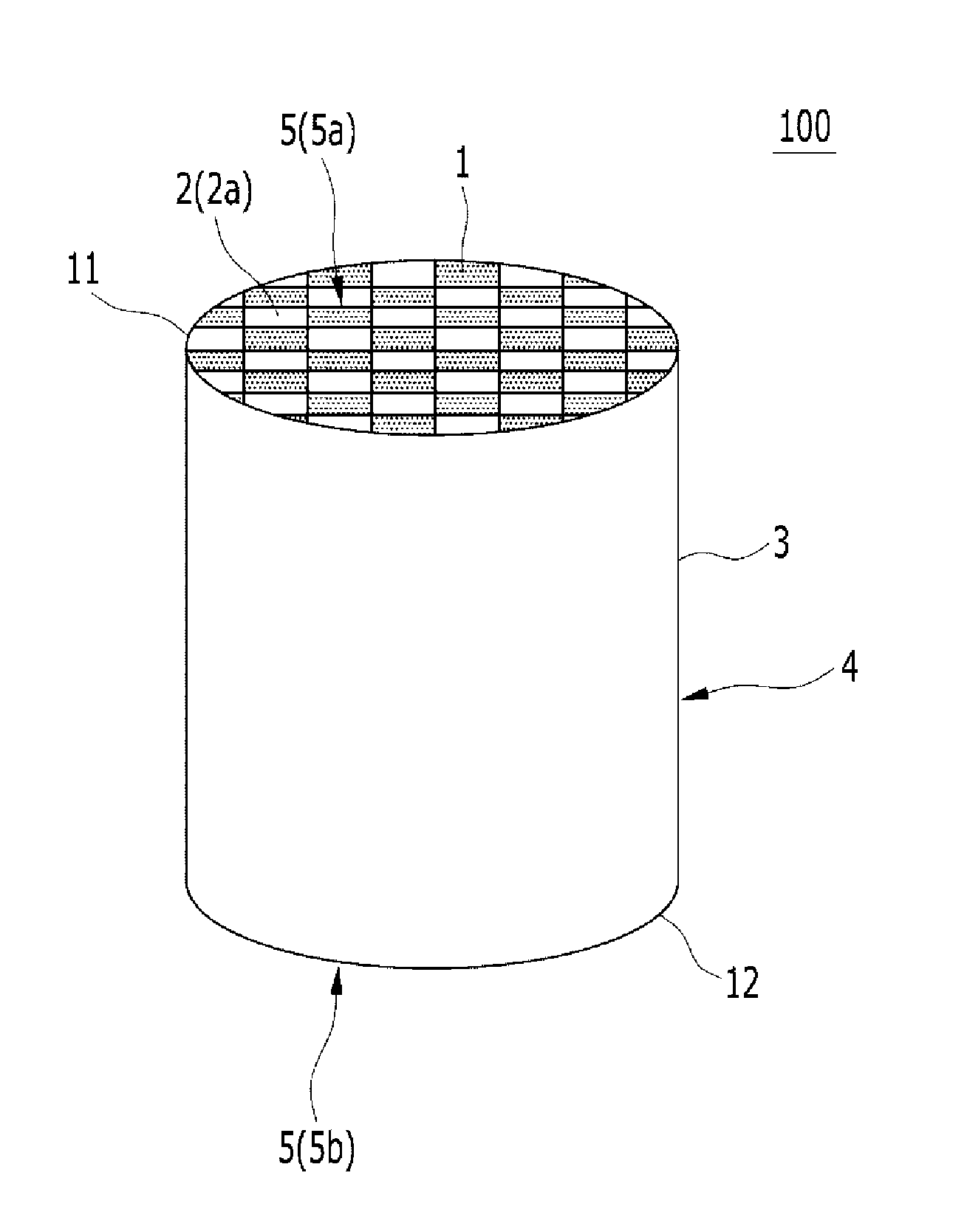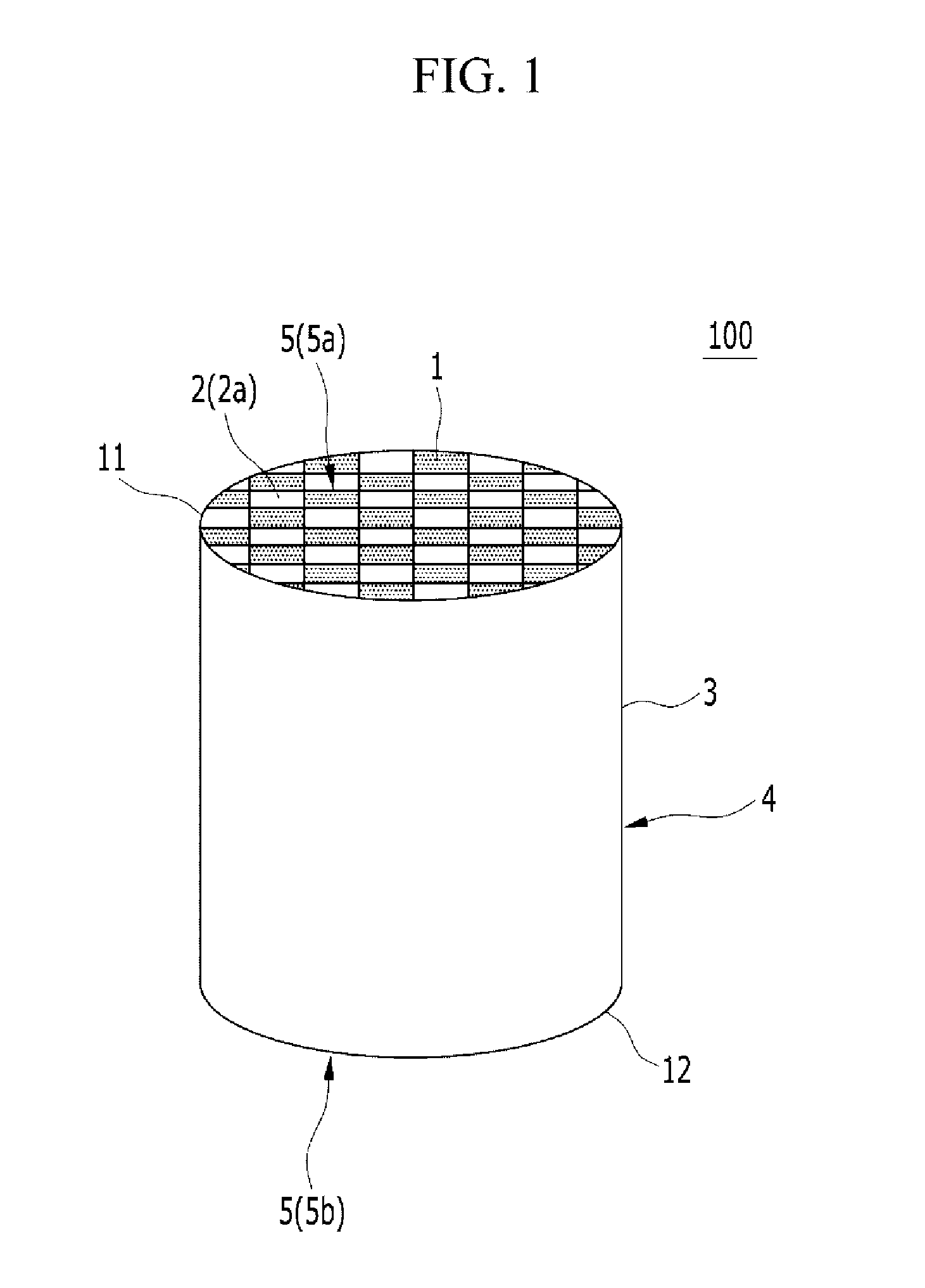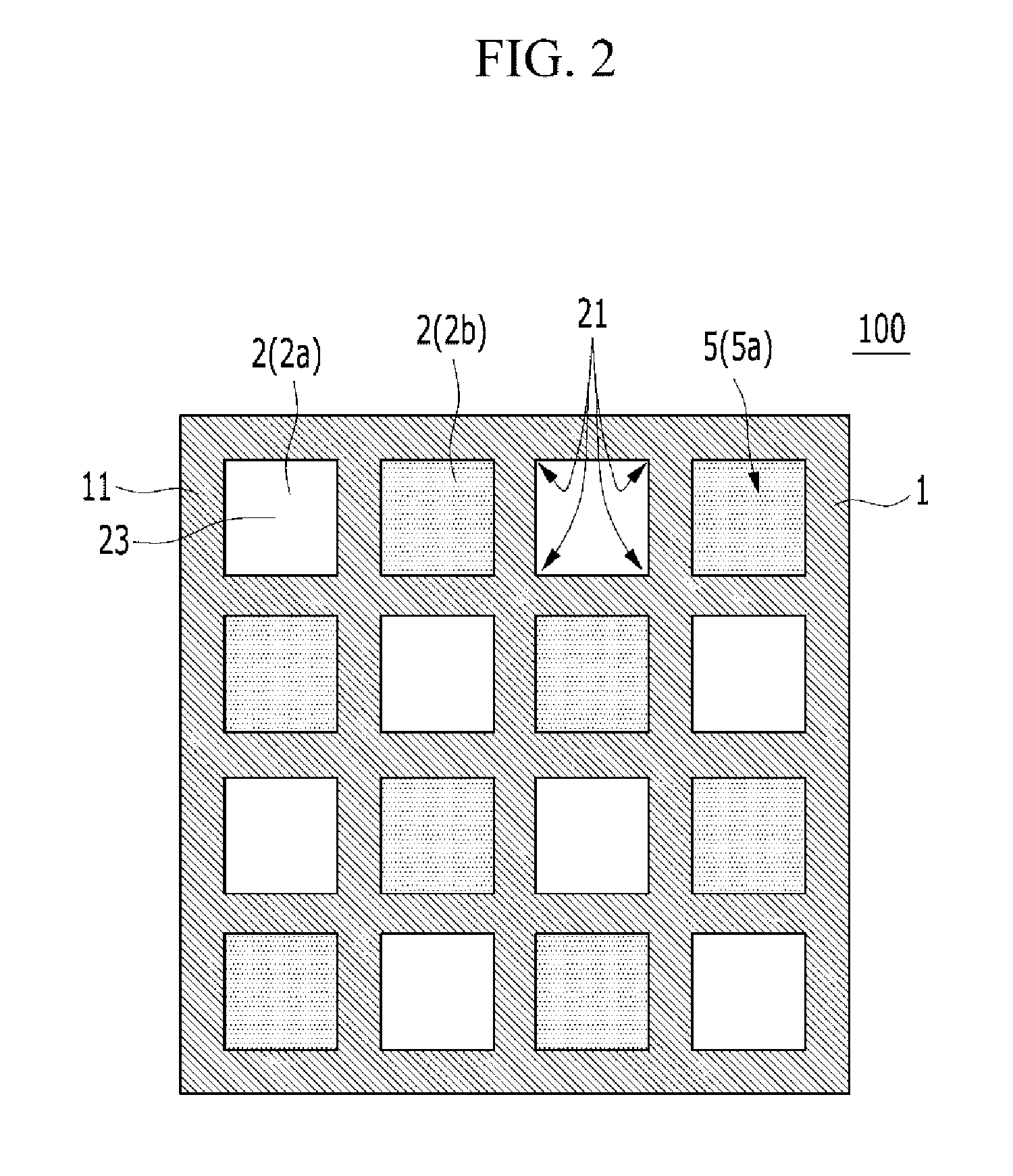Sealed honeycomb structure
a honeycomb and sealing technology, applied in the field of sealed honeycomb structure, can solve the problems of deterioration of the sealing performance of the honeycomb structure, and deterioration of the purification performance of the exhaust gas, so as to reduce the influence of pressure loss, improve the durability of the sealed honeycomb structure, and suppress the effect of pressure loss
- Summary
- Abstract
- Description
- Claims
- Application Information
AI Technical Summary
Benefits of technology
Problems solved by technology
Method used
Image
Examples
example 1
[0106]Cordierite material (alumina, talc, and kaolin) is used as the ceramic material. Mass ratio of alumina, talc, and kaolin is a mass ratio obtained after burning. Ceramic mold material is obtained by mixing the ceramic material with the binder (methylcellulose) and water. The obtained ceramic mold material is kneaded by using the kneader so as to obtain the body.
[0107]After that, the molded article of the honeycomb is formed by molding the body by means of a vacuum extruder. Wall thickness is 0.305 mm, cell density is 46.5 cell / cm2, and cell pitch is 1.47 mm in the honeycomb structure obtained by burning the molded article of the honeycomb. In addition, entire shape of the molded article of the honeycomb is cylindrical (diameter of the end surface is 143.8 mm, and a length in the extending direction of the cell is 152.4 mm). The entire shape of the molded article of the honeycomb is integrally formed (monolithic structure), and this honeycomb structure is represented by a “monol...
examples 2 to 9 and 11 to 15
and Comparative Examples 1 to 3 and 7
[0127]The sealed honeycomb structure is manufactured by the same method manufacturing Example 1 except that the sealing length of the sealing portion, and the cell where the reinforcing part is formed (whether the reinforcing part exists or not), the length of the reinforcing part, the wall thickness, and the cell pitch in the honeycomb structure are changed as shown in Table 1, and the intersection ratio (L / T) of the inlet cell and the intersection ratio (L / T) of the outlet cell are changed as shown in Table 1. In addition, Example 15 shows that the reinforcing parts are formed at a part of the outlet cells and the inlet cells. The same tests as Example 1 are done on the obtained sealed honeycomb structure. The results are shown in Table 2. In addition, the “soot mass limits (SMLs)” of Examples 1, 2, 10, 11, 14 and 15 and Comparative Examples 1, 4, 7 and 8 are detected.
example 10
[0128]Carbonization silicon (SiC) is used as the ceramic material so as to manufacture the honeycomb segment, and the honeycomb structure of segment type is manufactured by bonding sixteenth honeycomb segments. In detail, SiC powder and Si metal power are mixed in a mass ratio of 80:20, and methyl cellulose and hydroxypropoxy methylcellulose as the binder, starch and water-absorbent resin as the pore-forming material, surfactant and water are mixed to the mixture of SiC powder and Si metal power such that the ceramic mold material is obtained. The obtained ceramic mold material is kneaded by using kneader such that the body is obtained.
[0129]The molded article of honeycomb is formed by molding the body by means of the vacuum extruder. The wall thickness of the molded article of the honeycomb is 305 μm, the cell density of the molded article of the honeycomb is 46.5 cell / cm2, and the cell pitch of the molded article of the honeycomb is 1.47 mm in the honeycomb structure. In addition,...
PUM
| Property | Measurement | Unit |
|---|---|---|
| thickness | aaaaa | aaaaa |
| thickness | aaaaa | aaaaa |
| thickness | aaaaa | aaaaa |
Abstract
Description
Claims
Application Information
 Login to View More
Login to View More - R&D
- Intellectual Property
- Life Sciences
- Materials
- Tech Scout
- Unparalleled Data Quality
- Higher Quality Content
- 60% Fewer Hallucinations
Browse by: Latest US Patents, China's latest patents, Technical Efficacy Thesaurus, Application Domain, Technology Topic, Popular Technical Reports.
© 2025 PatSnap. All rights reserved.Legal|Privacy policy|Modern Slavery Act Transparency Statement|Sitemap|About US| Contact US: help@patsnap.com



